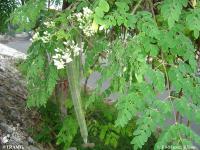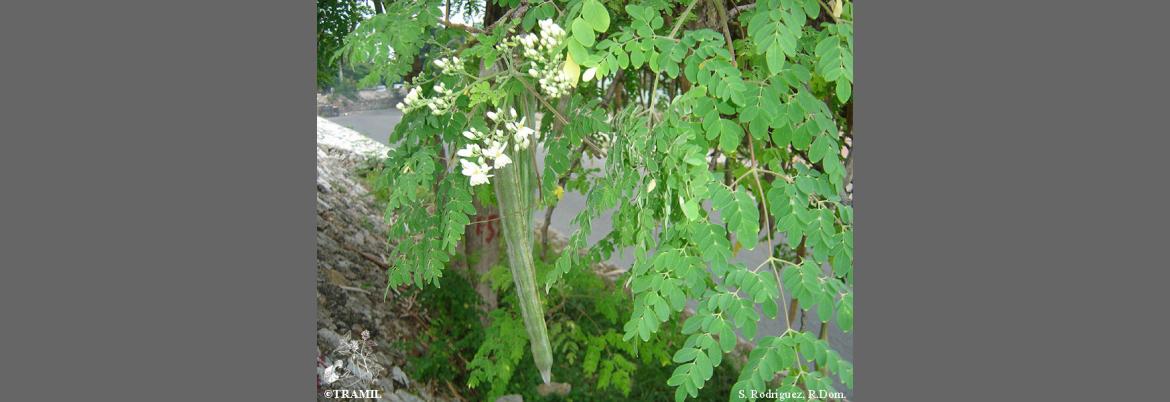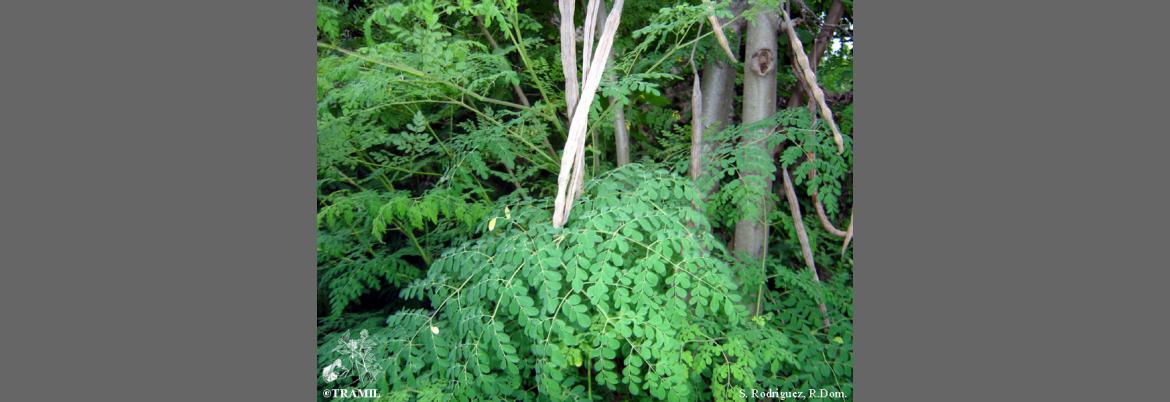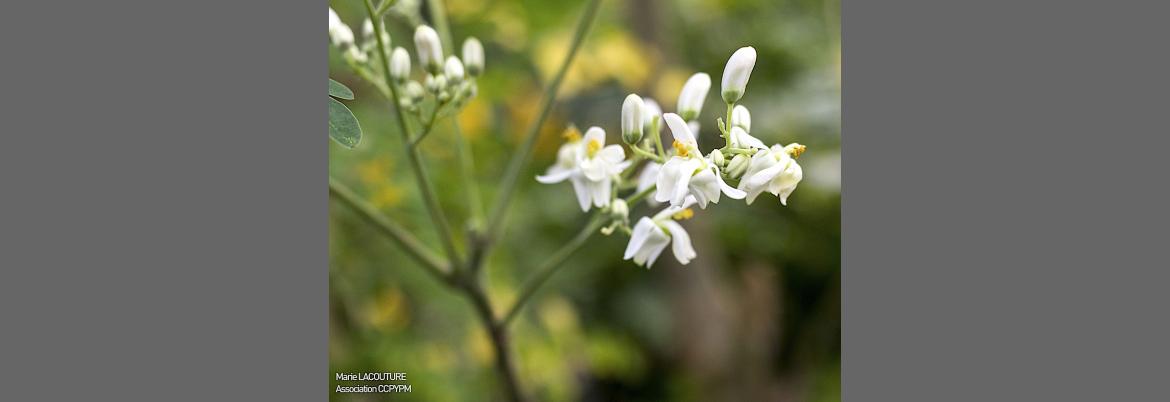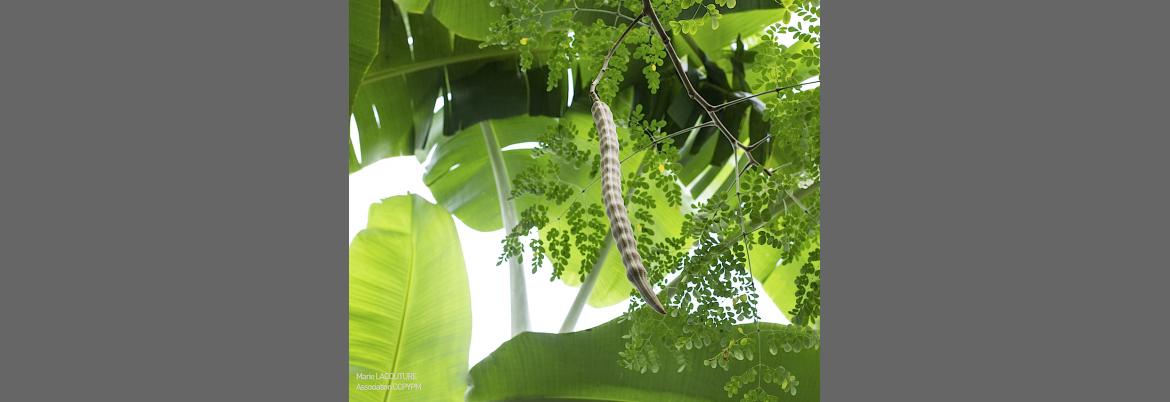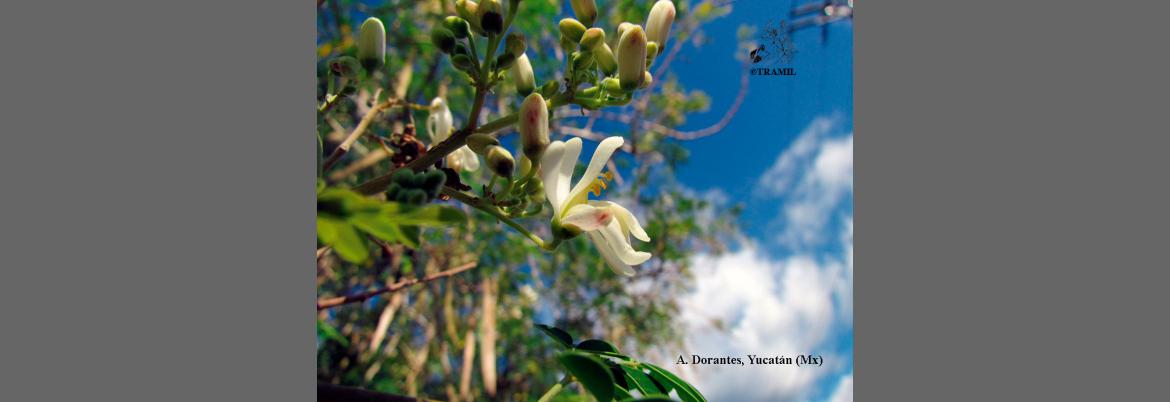1 WENIGER B, ROUZIER M, 1986 Enquête TRAMIL. Service Oecuménique d'Entraide SOE, Port au Prince, Haïti.
2 CARBALLO A, 1995 Cálculo de concentración y dosis de las drogas vegetales TRAMIL: Mensuraciones farmacognósticas y aproximaciones técnico-clínicas. Laboratorio provincial de producción de medicamentos, Sancti Spiritus, Cuba.
3 DELAVEAU P, BOTTEAU P, 1980 Huiles a intérêt pharmacologique, cosmétologique et diététique. IV.- Huiles deMoringa oleifera. Plantes Médicinales and Phytothérapie 14(1):29-33.
4 KHAN FW, GUL P, MALIK MN, 1975 Chemical composition of oil from Moringa oleifera. Pak J For 25:100-102.
5 VILLASENOR IM, FINCH P, LIM-SYLIANCO CY, DAYRIT F, 1989 Structure of a mutagen from roasted seeds of Moringa oleifera. Carcinogenesis 10(6):1085-1087
6 VILLASENOR IM, Lim-Sylianco CY, Dayrit F, 1989 Mutagens from roasted seeds ofMoringa oleifera. Mutat Res 224(2):209-212.
7 GUEVARA AP, VARGAS C, SAKURAI H, FUJIWARA Y, HASHIMOTO K, MAOKA T, KOZUKA M, ITO Y, TOKUDA H, NISHINO H, 1999 An antitumor promoter from Moringa oleifera Lam. Mutat Res 440(2):181-188.
8 VILLASENOR IM, DAYRIT FM, LIM-SYLIANCO CY, 1990 Studies on Moringa oleifera seeds. II. Thermal degradation of roasted seeds. Philippine J Sci 119(1):33-39.
9 BADGETT BL, 1964 The mustard oil glucoside from Moringa oleifera seed ascorbic acid analogs with deoxy side chains. Diss Abstr 25:1556.
10 EILERT U, WOLTERS B, NAHRSTEDT A, 1981 Antibiotic principle of seeds of Moringa oleifera and Moringa stenopetala. Planta Med 42(1):55-61.
11 DAYRIT FM, ALCANTAR AD, VILLASENOR IM, 1990 Studies on Moringa oleifera seeds. Part I. The antibiotic compound and its deactivation in aqueous solution. Philippine J Sci 119(1):23-32.
12 FAIZI S, SIDDIQUI BS, SALEEM R, SIDDIQUI S, AFTAB K, GILANI AUH, 1995 Fully acetylated carbamate and hypotensive thiocarbamate glycosides from Moringa oleifera. Phytochemistry 38(4):957-963.
13 RAMACHANDRAN C, PETER KV, GOPALAKRISHNAN PK, 1980 Drumstick (Moringa oleifera): A multipurpose Indian vegetable. Econ Bot 34:276-283.
14 DANIEL M, 1989 Polyphenols of some Indian vegetables. Curr Sci 58(23):1332-1334.
15 SHAFT N, IKRAM M, 1982 Quantitative survey of rutin-containing plants. Part I. Int J Crude Drug Res 20(4):183-186.
16 FAIZI S, SIDDIQUI BS, SALEEM R, SIDDIQUI S, AFTAB K, GILANI AUH, 1994 Isolation and structure elucidation of new nitrile and mustard oil glycosides from Moringa oleifera and their effect on blood pressure. J Nat Prod 57(9):1256-1261.
17 FAIZI S, SIDDIQUI BS, SALEEM R, SIDDIQUI S, AFTAB K, GILANI AUH, 1994 Novel hypotensive agents, niazimin A, niazimin B, niazicin A and niazicin B from Moringa oleifera: Isolation of first naturally occurring carbamates. J Chem Soc Perkin Trans I 1994(20):3035-3040.
18 SOLIS PN, RODRIGUEZ N, ESPINOSA A, GUPTA MP, 2004 Estudio antimicrobiano de algunas plantas TRAMIL con usos en Martinica. Informe TRAMIL. Centro de Investigaciones Farmacognósticas de la Flora Panameña CIFLORPAN, Facultad de Farmacia, Universidad de Panamá, Panamá, Panamá.
19 WENIGER B, 1992 Activités biologiques (cytotoxicité, effet sur la croissance, effet inmunomodulateur) de drogues végétales de la Caraïbe utilisées par voie locale contre les brûlures, dans des systèmes de cellules animales et humaines en culture. Rapport TRAMIL. Faculté de Pharmacie, Université de Strasbourg, Illkirch, France.
20 CAceres A, LOpez S, 1992 Informe TRAMIL sobre Moringa pterygosperma. Facultad de Ciencias Químicas y Farmacia, Universidad de San Carlos USAC, Guatemala, Guatemala.
21 CAceres A, LOpez S, 1991 Pharmacological properties of Moringa oleifera. 3: Effect of seed extracts on the treatment of experimental pyodermia. Fitoterapia 62:449-450.
22 CAceres A, SARAVIA A, RIZZO S, ZABALA L, DE LEON E, NAVE F, 1992 Pharmacologic properties of Moringa oleifera. 2: Screening for antispasmodic, antiinflammatory and diuretic activity. J Ethnopharmacol 36:233-237.
23 AL AZARIA JAHN S, 1981 Traditional water purification in tropical developing countries. Existing methods and potential application. Eschborn, Germany: Ed GTZ.
24 KERHARO J, 1969 Un remède populaire sénégalais: le "nebreday"(Moringa oleifera Lam). Plantes médicinales et phytothérapie 3:214-219.
25 RAGHUNANDANA R, GEORGE M, 1949 Investigation of plant antibiotics. III. Pterygospermin: The antibacterial principle of Moringa pterygosperma Gaernt. Indian J Med Res 37:159-167.
26 KURUP PA, NARASIMIHA RAO PL, 1954 Antibiotic principle from Moringa pterygosperma IV: Effect of addition of vitamins and aminoacids on the antibacterial activity of pterygospermin. Indian J Med Res 42:101-107.
27 DAS B, KURUP P, NARASIMHA R, 1957 Antibiotic principle of Moringa pterygosperma VII: Antibacterial activity and chemical structure of components related to pterygospermin. Indian J Med Res 45:195-196.
28 OLIVER-BEVER B, 1986 Medicinal plants in tropical West Africa. London, England: Cambridge University Press.
29 CACERES A, CABRERA O, MORALES O, MOLLINEDO P, MENDIA P, 1991 Pharmacological properties of Moringa oleifera. 1: Preliminary screening for antimicrobial activity. J Ethnopharmacol 33(3):213-216.
30 BERGER M, HABS M, JAHN SA, SCHMAHL D, 1984 Toxicological assessment of seeds from Moringa oleifera and Moringa stenopetala, two highly efficient primary coagulants for domestic water treatment of tropical raw waters. East Afr Med J 61(9):712-716.
31 GRABOW W, SLABBERT JL, MORGAN WSG, JAHN SAA, 1985 Toxicity and mutagenicity evaluation of water coagulated with Moringa oleifera seed preparations using fish, protozoa, bacterial, coliphage, enzyme and Ames Salmonella assays. Water SA (Pretoria) 11(1):9-14.
32 Ingel TH, Bhide BV, 1951 Chemical Investigation of the gum from the drumstick plant Moringa oleifera. Curr Sci 20:107-108
